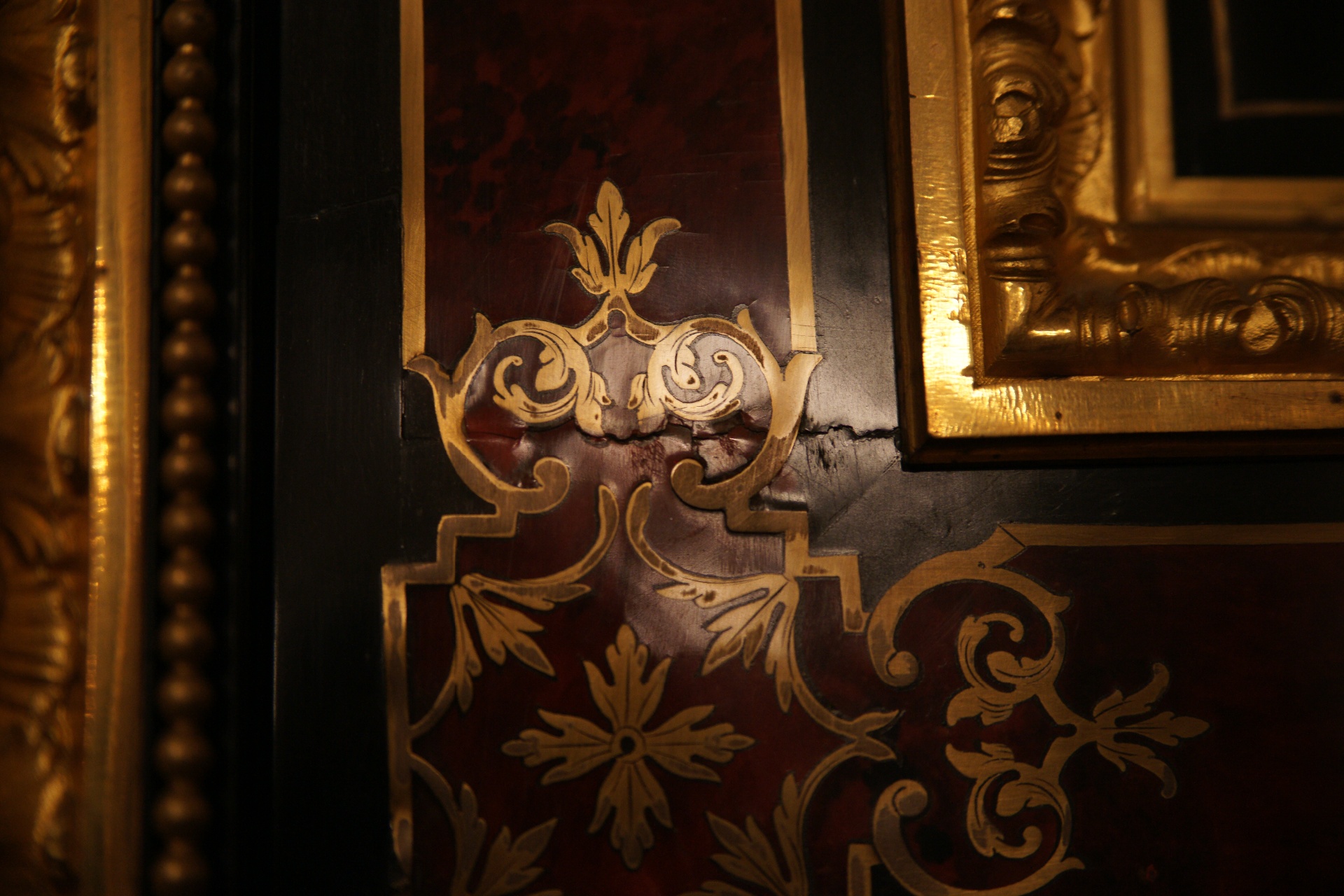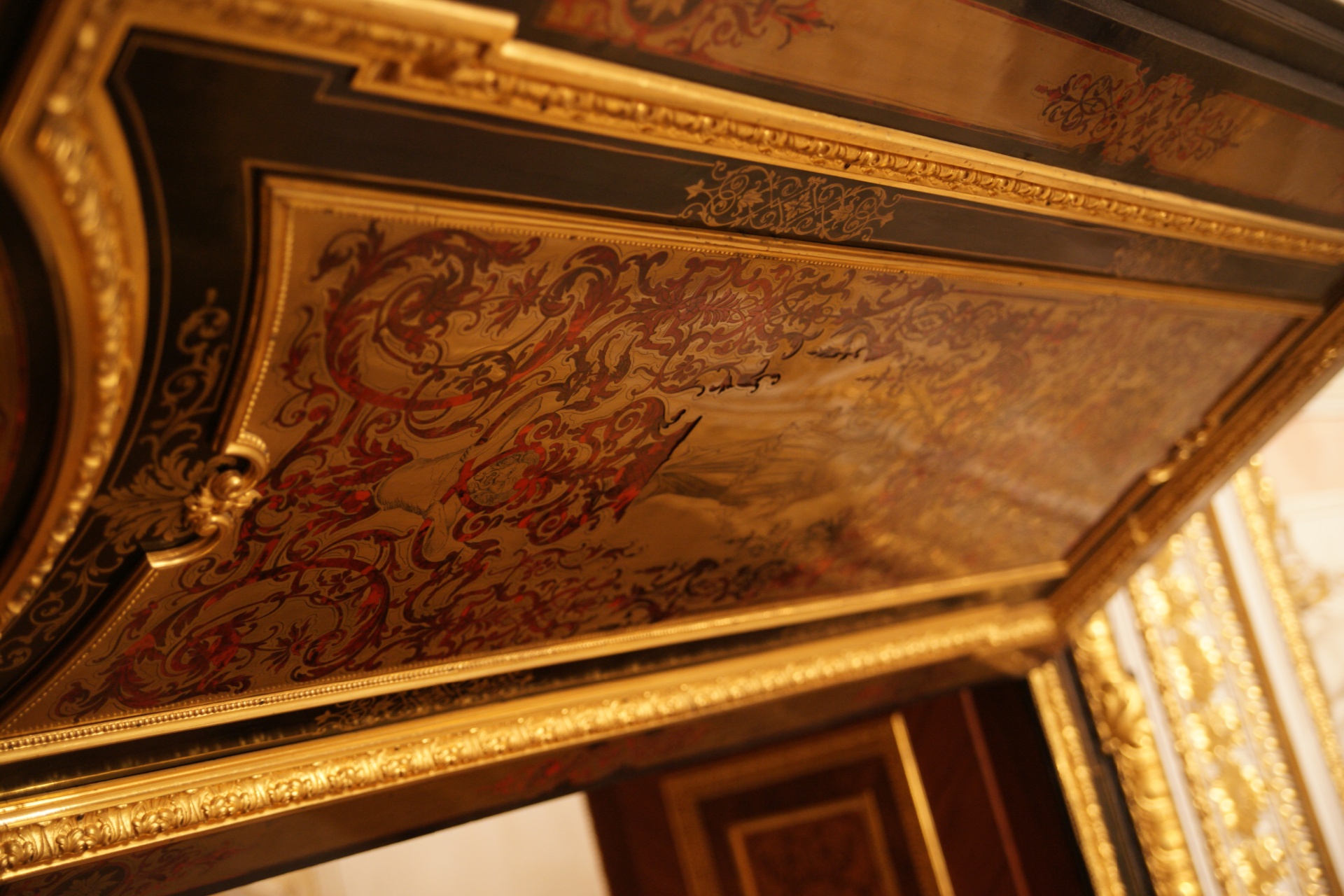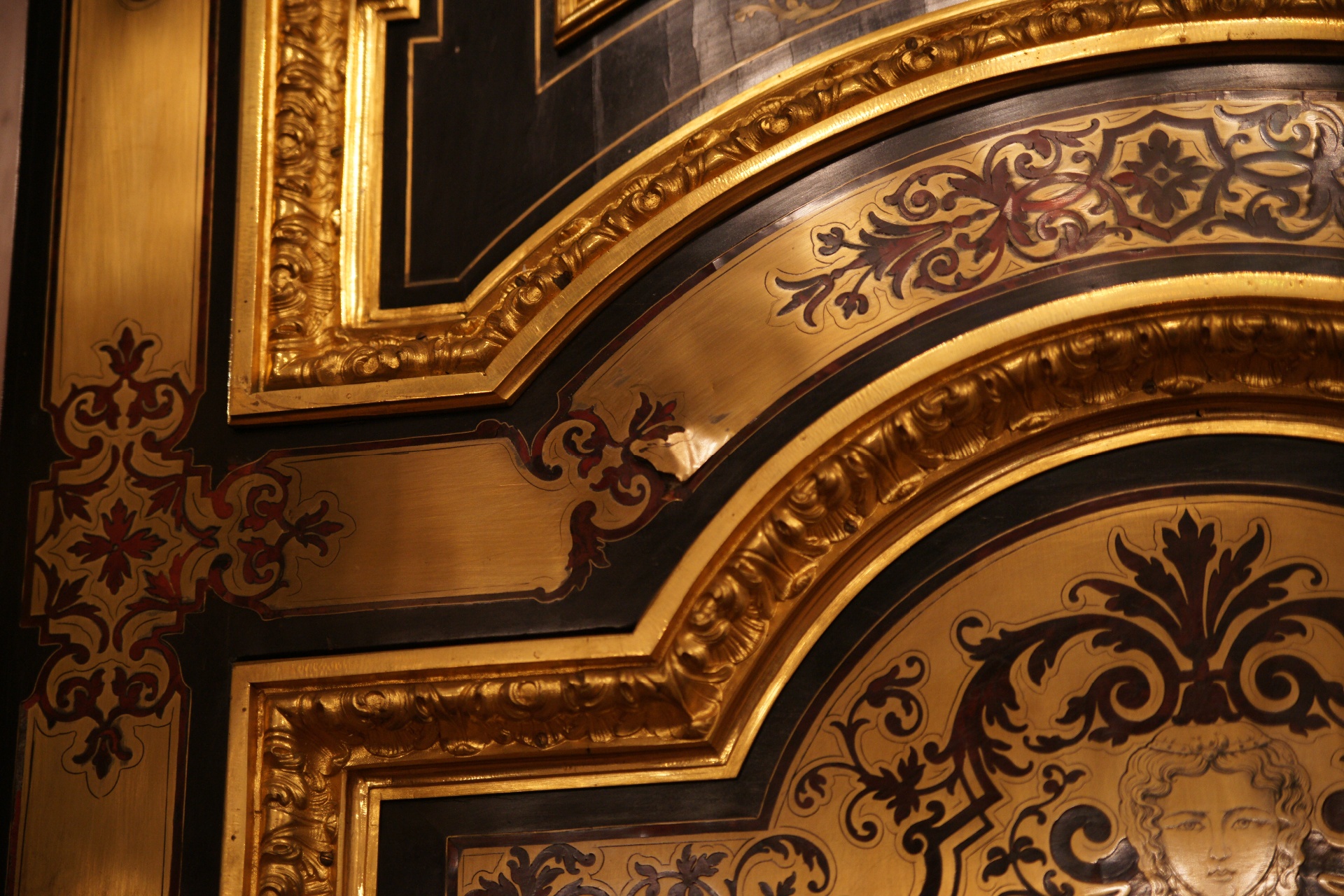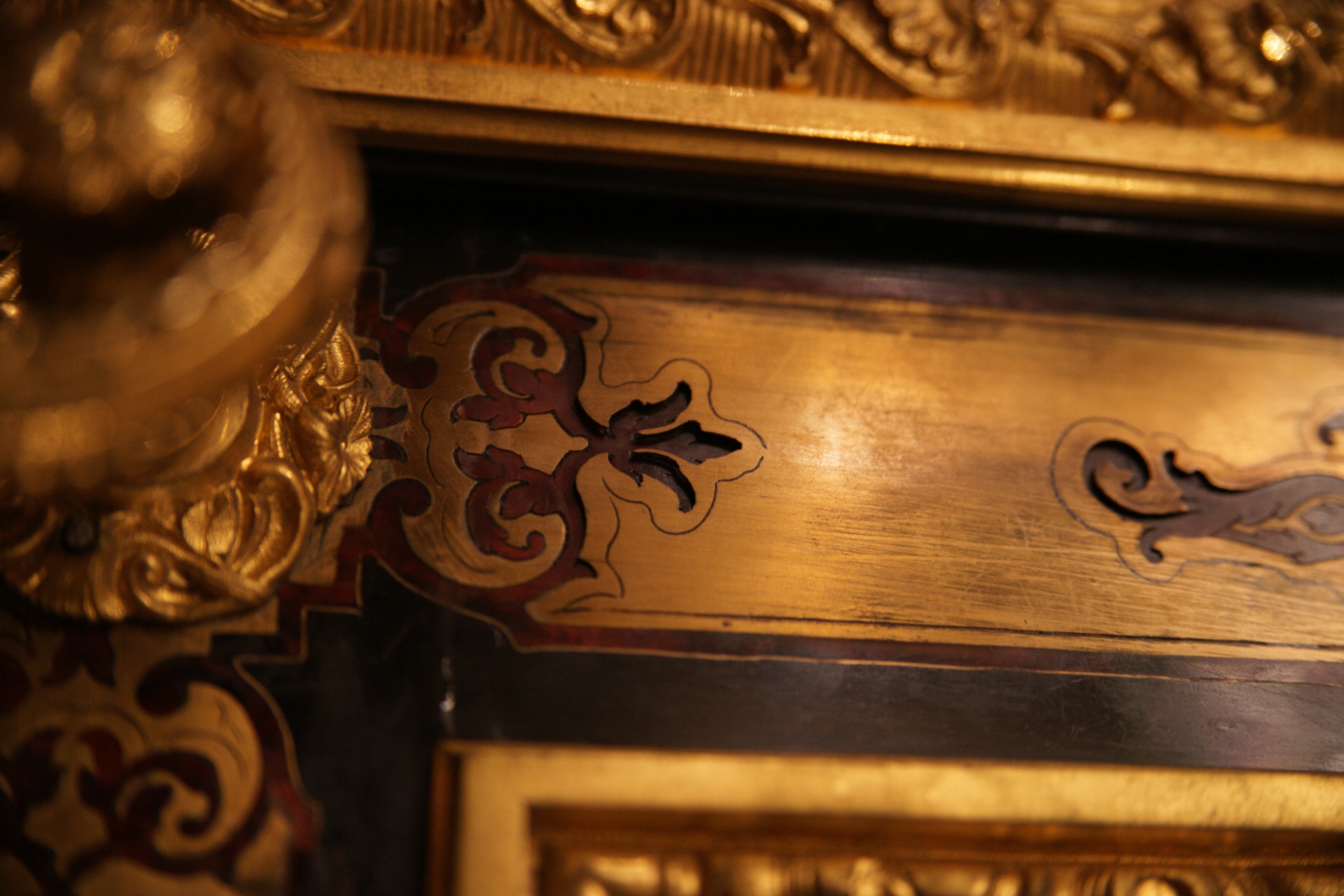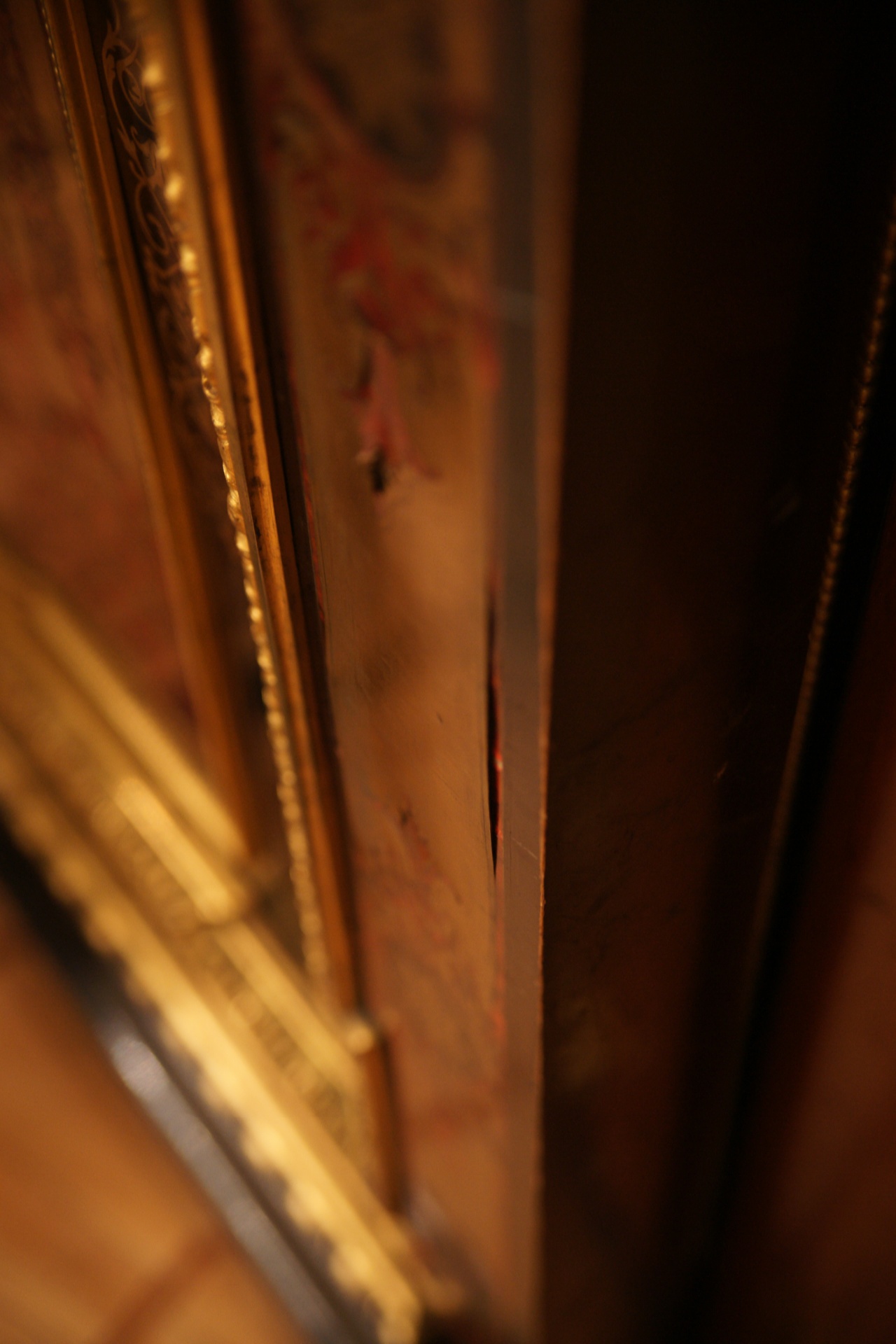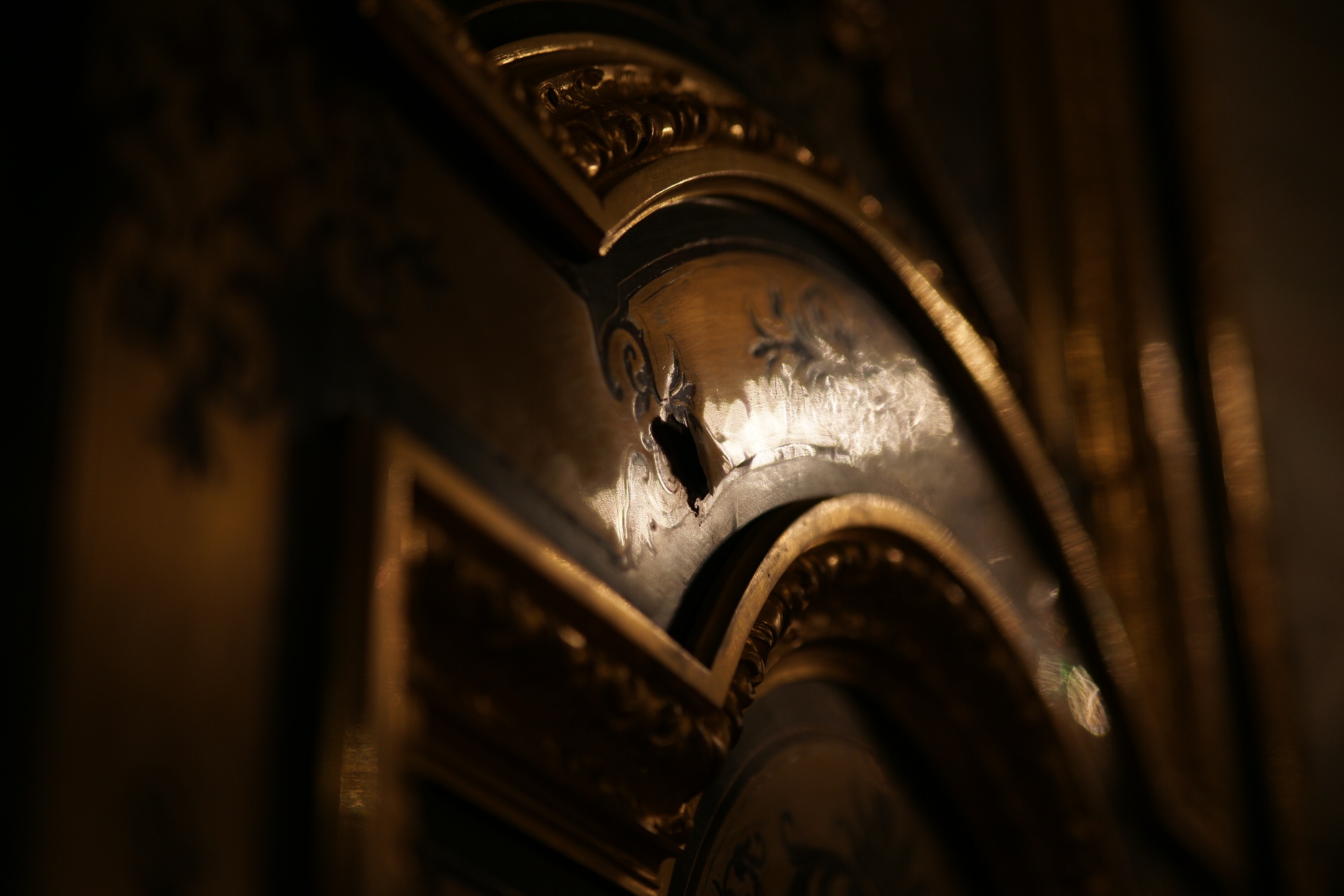Project for the partial restoration of the Leonardo da Vinci Hall. Mid-19th-Century Doors
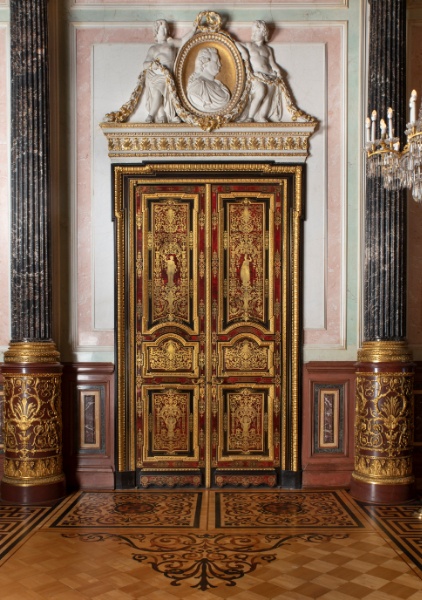 Andrei Tur. Doors of the Leonardo da Vinci Hall Mid-19th century. Boulle technique; 350.0 × 159.8 cm
Andrei Tur. Doors of the Leonardo da Vinci Hall Mid-19th century. Boulle technique; 350.0 × 159.8 cmHistory of the Hall
The sumptuous decoration of the Leonardo da Vinci Hall (also known as a Hall of the Italian Renaissance and the Hall with Two Tiers of Windows) provides a superb setting for two world-famous masterpieces by Leonardo da Vinci – the Madonna with a Flower (Benois Madonna) and Litta Madonna. Historically the room was also known as the Small Field Marshals’ Hall in honour of the Russian military commanders Piotr Rumiantsev, Grigory Potemkin, Vasily Dolgorukov, Alexander Suvorov, Mikhail Kutuzov and Ivan Paskevich, whose relief profiles on a gold ground are placed in oval medallions above the doorways.
The hall with two tiers of windows that once served as a drawing-room is located in the building of the Old Hermitage which was added to the complex of the imperial residence to the design of the architect Yury Matveyevich (Georg Fredrich) Veldten in 1771–87. In the 1850s the building was thoroughly reconstructed, and the rooms were redecorated to the designs of the court architect Andrei Ivanovich Stakenschneider. Stakenschneider took his inspiration from French architecture of the era of Louis XIV, which combined the grandeur of Classicism with the rich diversity of colour characteristic of the Baroque. The drawing-rooms, studies and reception rooms on the upper floor of the building were intended for the heir to the throne, Nikolai Alexandrovich (1843–1865), but the Tsesarevich was not destined to occupy this suite of rooms, as he died in Nice in April 1865.
From the mid-1860s, the hall housed a collection of French paintings that the public could view only in the summer months and only when escorted by an attendant. From time to time, the hall was used as accommodation for high-ranking guests visiting the court. In the 1890s it was used to display gifts that the future Emperor Nicholas II had received during his journey to the Orient. In the spring of 1920, a temporary exhibition was opened in the suites of rooms on the upper floor of the Old Hermitage that became the first museum display of the post-revolutionary era. In the middle of the century, the works by Leonardo da Vinci were moved here for permanent display.
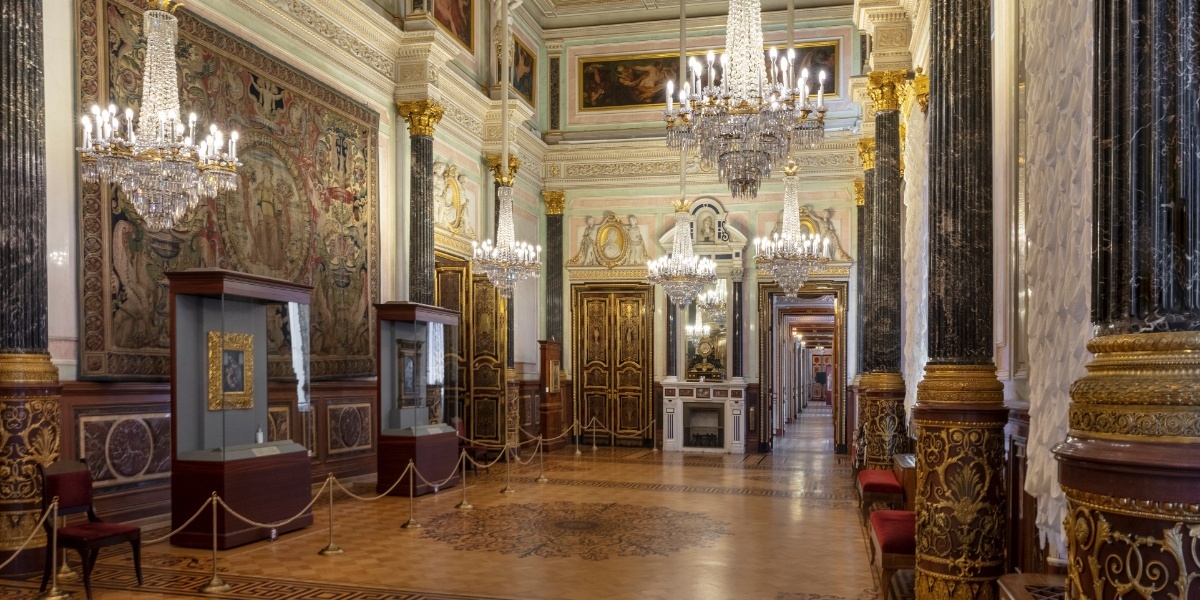
Description of the Object for Restoration
The doors are an important element in the rich interior decoration of the Leonardo da Vinci Hall. There are six sets of double doors altogether. The doors were made in the 1850s in the St Petersburg workshop of the eminent furniture-maker Andrei Ivanovich Tur. His establishment produced furniture to the designs of the capital’s leading architects, including pieces for the suburban palaces belonging to the imperial family.
The doors are decorated with gilded bronze and faced with a mosaic of tortoiseshell and engraved brass made in the Boulle technique (named after André-Charles Boulle, cabinetmaker to the court of Louis XIV). This is a very rare example of Russian furniture-work, and at present no analogies have been identified. There is a distant resemblance to the exterior doors of the Mariinsky Palace that were finished in a marquetry technique and brought to St Petersburg from Munich by Duke Maximilian of Leuchtenberg in the early 1840s.
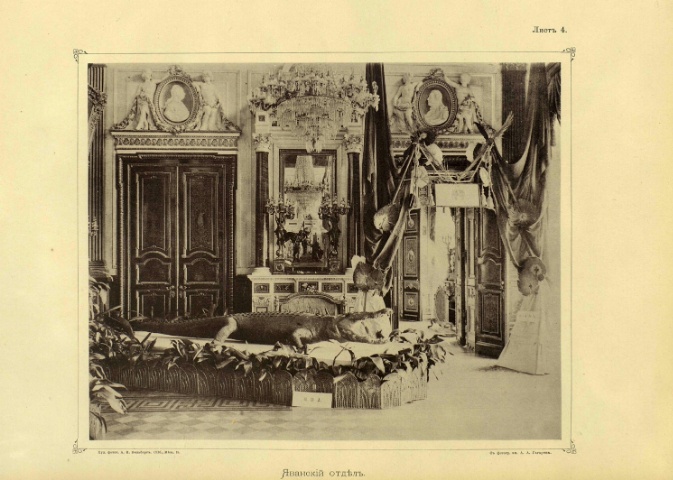 The display of gifts brought back by Tsesarevich Nikolai Alexandrovich (the future Nicholas II) from his voyage to the Far East. Mid-1890s photograph.
The display of gifts brought back by Tsesarevich Nikolai Alexandrovich (the future Nicholas II) from his voyage to the Far East. Mid-1890s photograph.State of Preservation
The total area of the mosaic decoration of the doors is 67 square metres. The preservation of items decorated in the Boulle technique has always been highly problematic. Due to seasonal fluctuations in humidity, the more stable tortoiseshell and brass tend to lose their adhesion to the moving “breathing” wooden base. The doors in the Leonardo da Vinci Hall are no exception and they have been restored several times. Preliminary examination indicates that they have been refurbished at least three times and losses of both tortoiseshell and brass have been made good using various imitations and fillers.
At the present time, all the doors are in an unsatisfactory condition and the two pairs in the doorways by the windows require immediate attention. To preserve these unique pieces of decorative and applied art from the interiors of the Old Hermitage, the four doors by the windows have been removed.
The restoration project calls for the implementation of full-scale conservation and restoration following a special method developed in the State Hermitage’s Laboratory for the Scientific Restoration of Furniture. The intention is to completely remove the mosaic and to conserve the wooden base before reinstalling the mosaic in such a way as to preserve all the original engraving. In view of the large volume of work and the complexity of the task, the plan is to restore one pair of doors from a single doorway each year.
A working group of State Hermitage staff has been formed for the restoration of the doors:
project curator – Marina Ilyina from the Department of the History and Restoration of Architectural Monuments;
project leader and methodologist – Vladimir Gradov, Head of the Laboratory for the Scientific Restoration of Furniture;
chair of the restoration commission of the Laboratory for the Scientific Restoration of Furniture – Tatyana Semenova, senior researcher in the Department of Western European Applied Art;
members of the staff of the Laboratory for the Scientific Restoration of Furniture who will carry out the work.
This project is seeking support.
|
Contact: |
Yevgeny Feodorov |
|
|
E-mail: projects@hermitage.ru |
